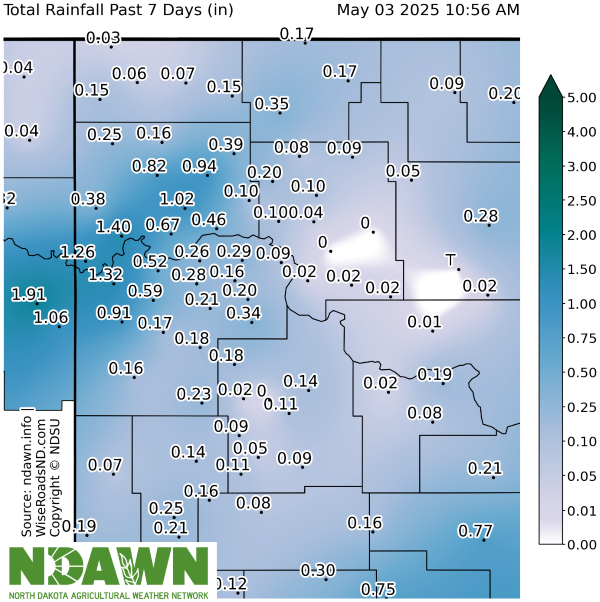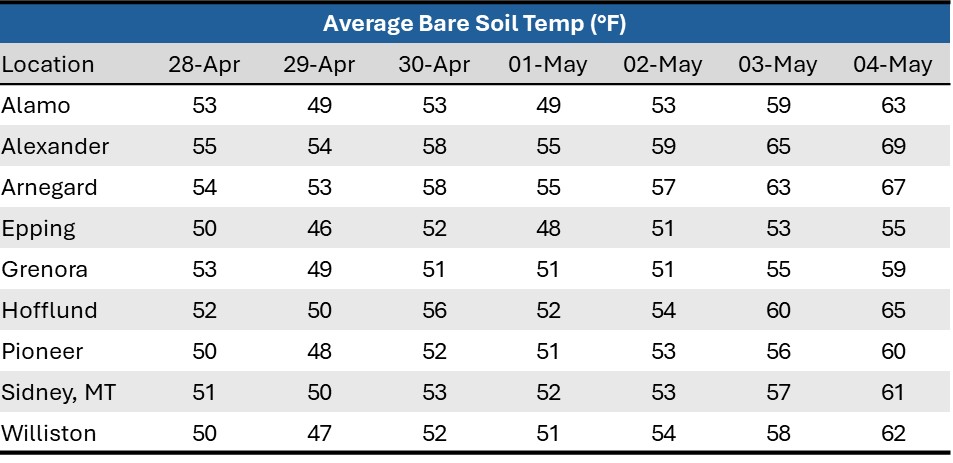Agronomy Update
May 05, 2025
Meet Horizon Resources’ Agronomy Intern
My name is Shaun Branham, and I am working as a summer intern with the Horizon Resources Agronomy Division in Williston. I’m currently pursuing a degree in Precision Agronomy at the North Dakota State College of Science (NDSCS) in Wahpeton, ND, where I am learning about crop production including soil science, weed ID, field scouting and agronomy. I am originally from Williston and a graduate of Williston High School. Outside of work and school, I enjoy spending time outdoors, especially hunting and fishing. I am excited to work with the customers and agronomy team at Horizon Resources to expand my knowledge and skills.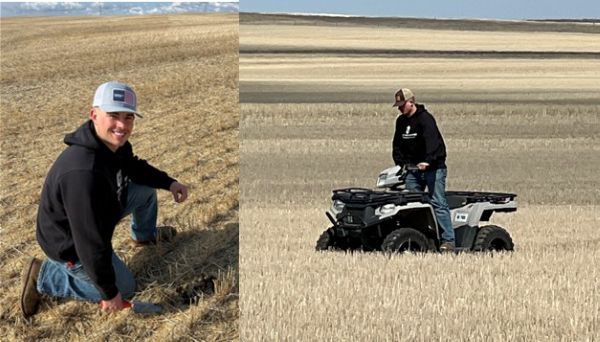
Spring Burndown Strategies for Tackling Tough Kochia
As spring wanes on and early invaders like kochia start to rear their heads, timely burndown applications set the stage for a clean start to the cropping season. Among the most challenging early-season broadleaf weeds is kochia, which is notorious for evading herbicide sprays with leaf hairs that bind active ingredients before they can be absorbed. Let’s explore why kochia is so difficult to control at thepre-emergence stage and I’ll discuss some tips to maximize burndown efficacy, and protect your investment in glyphosate chemistry.
Understanding Kochia’s Early-Stage Defense
Kochia seedlings develop leaf hairs almost immediately upon emergence. These hairs protect the plant from herbicide applications via two mechanisms.1. Intercept spray droplets: Tiny droplets become lodged before they ever reach the cuticle.
2. Collect dust and soil particles: Trapped cations (e.g., calcium, iron, magnesium) bind and deactivate certain herbicides like glyphosate.
Together, these factors reduce the effective dose delivered to the plant, often leaving a significant portion of the weed population uncontrolled.
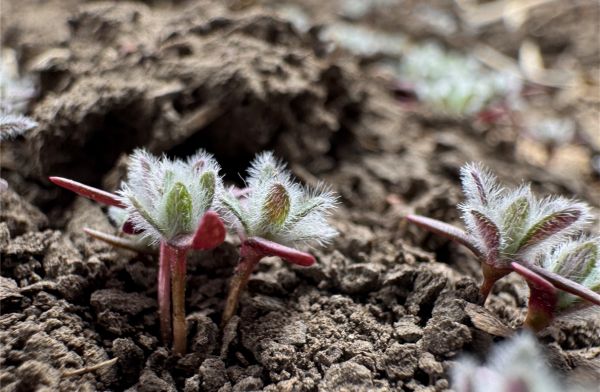
Timing Is Key: Let Kochia Grow to a Quarter Size
Patience can pay off when targeting kochia. If you can, allow seedlings to reach roughly the diameter of a quarter before applying burndown. Kochia grows outward in a whorl more than upward in its early stages, and this size ensures enough leaf surface area is exposed for effective control. More surface area improves contact and absorption. Applying too early, in the cotyledon or first true leaf stage, means battling a dense mat of hairs and heavy dust loading, often yielding disappointing knockdown.
Boost Uptake with Quality Surfactants
Non-ionic surfactants (NIS) are your go-to for improving spray droplet behavior on weeds protected by leaf hairs. An NIS will reduce the surface tension of the droplet and it will spread rather than bead, slipping between hairs to reach the leaf surface. A uniform film will also aid in the consistent uptake across leaf surface. NIS addition rates typically range from 0.25%–0.5% v/v (1–2 qt/100 gal), but always follow label instructions.Combat Herbicide Tie-Up with Water Conditioners
Hard-water cations in the spray solution can tie up herbicide and this is especially true with glyphosate. Incorporating a water conditioner,most commonly ammonium sulfate (AMS), delivers two benefits:
1. Cation precipitation: AMS complexes with calcium, iron, and magnesium, preventing them from inactivating glyphosate.
2. Improved absorption: The ammonium ion helps carry glyphosate into the leaf.
The standard recommendation is 8.5–17 lb AMS per 100 gallons of spray solution, or follow tank-mix label guidelines.
For simplicity and reliability, Horizon Resources offers Class Act NG , a blend of non-ionic surfactant and ammonium sulfate water conditioner in one convenient jug. Adding Class Act to the tank during glyphosate burndown has become standard practice due to its proven performance and ease of use.
Enhancing Burndown with Tank Mix Partners
Modern weed populations, including kochia, often carry resistance to glyphosate alone, making tank-mix partners critical for robust control. A proven Spring blend for durum and wheat is Dicamba + 2,4-D at a rate of 4 oz of dicamba and 12 oz of 2,4-D per acre. This delivers strong broadleaf activity when added to glyphosate.Brash (16 oz/acre) combines the above rates in one jug at a competitive price. We leave out the Class Act when it is mixed with RT3 (K+ salt glyphosate) because of the risk of salting out. High water volumes (> 10 GPA) reduces the risk of incompatibility. With lower spray volumes (5 GPA), Brash can be combined with an IPA-salt glyphosate like Cornerstone 5 Plus.
Another option is to use Saddle-Up (acid formulation), which carries the same dicamba + 2,4-D load as Brash but exhibits no incompatibility or salting-out issues at any carrier volume.
Closing Thoughts
Effective Spring burndown begins with understanding your enemy. By waiting for the right growth stage, adding quality surfactants, and protecting your herbicide with a water conditioner, you’ll greatly improve control of stubborn kochia.
Here’s to a clean start and a successful season ahead!
Kyle Okke, CCA, Crop Consultant Agile Agronomy LLC
Scouting for Early Season Insect Pests
As air and soil temperatures rise, insect development accelerates with the accumulation of heat units. Be alert for insect pests emerging during this time. Currently, we're monitoring for damage from cutworms, wireworms, and flea beetles in canola.Cutworms
Some cutworm species overwinter as caterpillars and can cause immediate spring damage, while others overwinter as eggs, with feeding extending into June. Cutworms feed on leaves and stems, often severing the plant at the base—hence their name. The tops of cut plants will be dead on the ground. To confirm their presence, dig around 3 inches deep near damaged plants. Damage often appears first on hilltops and south-facing slopes.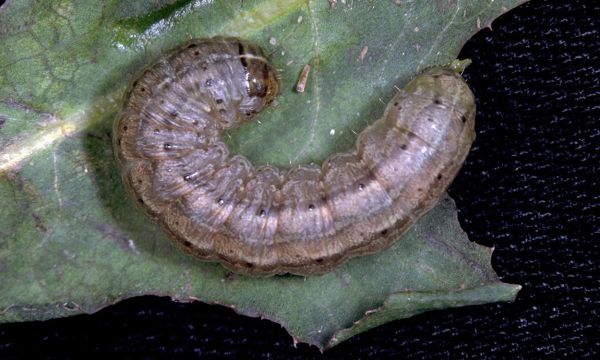
Early in the season, if cutworm damage is observed, prompt treatment with a registered foliar insecticide is recommended. Smaller cutworms are more susceptible to control, so early intervention is key. Delaying treatment until the in-crop herbicide application may result in unacceptable damage levels. Economic thresholds for foliar insecticide application are provided below. For preventative control, the seed treatment Lumivia® offers protection against cutworms on labeled crops.
| Crop | Economic Threshold |
| Alfalfa | 4-5/ft2 on established stands, 2 on new stands |
| Canola | 3-4 cutworms per square yard or 25% stand loss |
| Small Grains | 4-5/ft2 |
| Peas/Lentils | 2-3/m2 |
| Corn | 3-6% of plants cut, cutworms < 3/4 inch in length |
| Soybean | 1 cutworm/3 ft of row or 20% plants cut |
| Dry Bean | 1 cutworm/3 ft of row, cutworms < 3/4 inch in length |
Wireworms
Wireworms overwinter up to two feet down in the soil and when soil temps reach 50-55°F they will move up to the surface to feed. Larva feed on germinating seeds and seedlings resulting in thin stands or bare patches. Wireworm damage is more likely in a rotation heavy in grasses (ex. corn, small grains, pasture) and is more severe in cool, wet weather. Wireworm damage might be confused for cutworms. There are no effective foliar insecticide treatments for wireworm so it is important to determine which is the culprit. Digging around the damaged plant will usually reveal the wireworms which can be a yellowish white to coppery color. Unlike cutworms, they do not curl into a ball.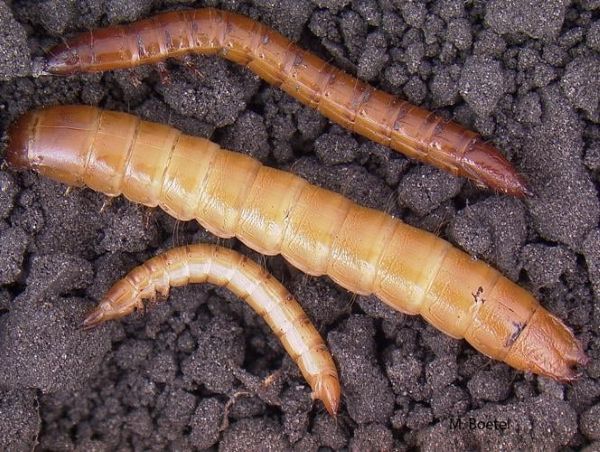
There are some fields in the area with wireworm infestations and I saw some feeding damage last spring in lentils so keep an eye out for spotty stands. Damage is usually limited to early in the spring as the wireworms move back into the deep soil to avoid hot temperatures (>80°F) later in the summer. While we may not be able to do anything this year, next year the crop going into that field can get a seed treatment to prevent crop damage.
Flea Beetle
Flea beetles overwinter as adults in grassy areas and shelter belts. They begin to emerge when air temperatures reach 58°F, and with the heat last weekend early planted canola should be scouted for flea beetles and foliar feeding damage.Insecticide seed treatments will last around 21 days, but they are mobile in the soil. If the heavy rain last week washed them below the roots in the soil profile they can no longer take up the active ingredient, leaving the plant tissue unprotected.
The damage threshold is 25% leaf injury (picture below) but damage can increase quickly with heavy infestations. Watch for stem feeding as well as the flea beetle can damage the growing point and kill the plant. Scout the crop from the cotyledon to four-leaf stage to determine if a foliar insecticide is warranted. As the plant gets bigger it can tolerate more feeding.
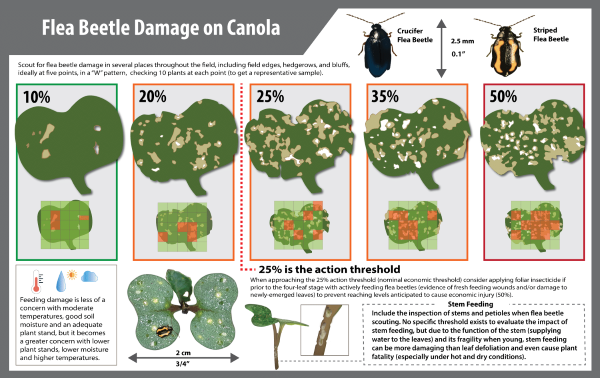
Scout field edges first and along grassy areas first (picture below). Canola fields planted near where canola was last year is at enhanced risk but flea beetles are capable of migrating long distances. I found some damage in early emerged canola on Friday (picture below) but there were not many beetles present. The beetles need to feed on the plant tissue and ingest the insecticide to be killed. If damage is limited to the field edges an application can be made just to the field perimeter.
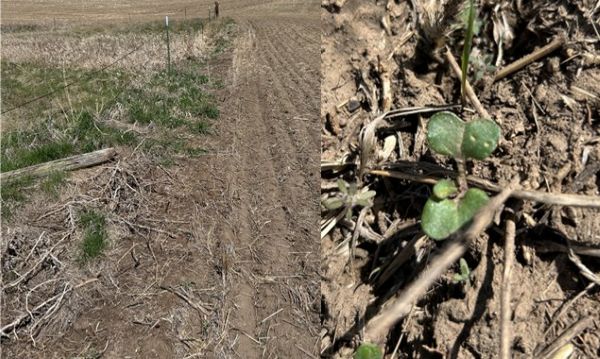
We will continue to monitor fields in the coming weeks for insect feeding as well as early emerging weeds. While it is still important to scout your own fields, we will provide updates in future newsletters if we see anything of concern.
Dr. Audrey Kalil, Agronomist & Outreach Coordinator
Phosphate Management in Pulse Crops
Phosphate fertility in peas, lentils, and chickpea can be a critical driver of yield, particularly on soils testing low in available phosphorus. Unlike nitrogen in small grains, where yield gains often increase linearly with additional N. Phosphate responses follow a probability curve: the lower your soil test, the higher the chance of a significant yield bump; conversely, on high-testing soils, the likelihood of payoff diminishes.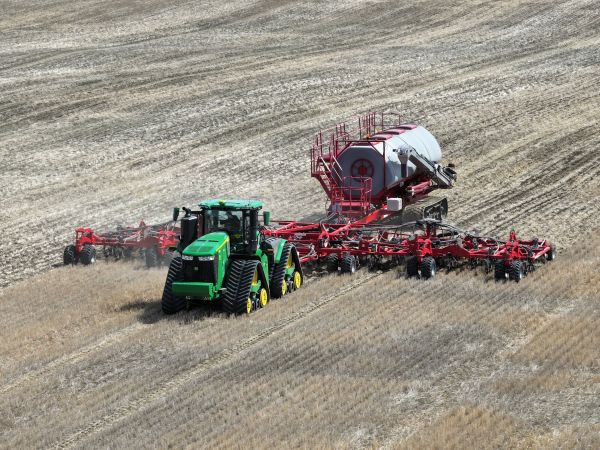
Understanding the Phosphate Response Curve
- Low-testing soils (< 7 ppm Olsen P): High probability of meaningful yield increase.
- Moderate soils (7–16 ppm Olsen P): Intermediate chance of response.
- High-testing soils (> 16 ppm Olsen P): Low probability of yield response and economically marginal.
This probabilistic relationship means fertilizer decisions should hinge on soil test values and the cost of phosphate.
Starter Phosphate for Early Vigor
Even when yield response probability is low because the soil test is high, a small starter dose (15 lb P2O5/acre) placed with the seed can accelerate early growth in some crops. This would equate to roughly 37 lb./ac of MicroEssentials S10® (12-40-0-10). This is especially true when early crop development is taking place in cool soils (<60°F), where soil phosphorous is less available to the plant. Potential benefits include improved root development, faster canopy closure and early flowering/pod set. Starter fertilizer placed with the seed needs to stay below safe seed-placed limits (consult individual crop and seed-row guidelines). Generally speaking, 50 lbs./ac of MicroEssentials S10® with the seed for peas, lentils and chickpeas will be safe. At that rate you will be getting 5 lbs./ac of sulfur as well, which research has shown can increase lentil yield.Soil Testing is Key
It all comes down to the fact that we need to be testing soils for Olsen P levels annually for all crops. Zone sampling low, medium and high productivity areas of your field can help pinpoint variability. With a variable rate prescription for your starter fertilizer you can apply higher phosphate rates on low-test zones and skip or reduce on high-test acres.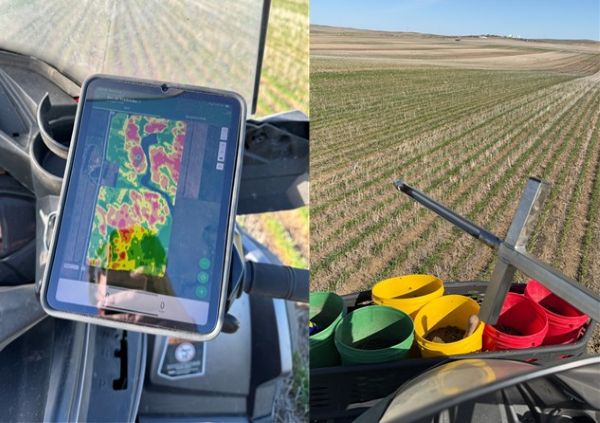
Phosphate isn’t one-size-fits-all in pulse crops. By understanding your soil’s Olsen P status and potential yield/economic response, and using starter phosphate strategically, you can optimize returns in peas, lentils, and chickpea even in a high-priced P market. If you don't have those soil test results, it's a gamble knowing if you will be making the right decision or not.
Kyle Okke, CCA, Crop Consultant Agile Agronomy LLC
Spring Fertilizer Crunch: Lessons in Planning and Pricing
As early as May 1st dealers in the Midwest were already scrambling to find urea. Normally, urea is easy to source in May and sometimes we can even see the prices start to soften in the second half of the month. Many factors played into the current situation but one of the major drivers is the projected 96 million acres of corn. This put more pressure on UAN (liquid nitrogen) in the Southern Plains which almost wiped out the availability of UAN for the Northern Plains. As a result, many producers had to switch UAN tons to urea.I always say that we are at the end of the line for most crop inputs being this far North, so here we are scrambling to find urea tons to finish out our planting season. Right now, most fertilizer producers are already sold out through May. If tons are available, either on barges or coming up the river system, it will be late May before it makes it to western North Dakota. Canadian producers are also sold out through May, which doesn’t paint a very bright picture for growers who have not sourced their dry fertilizer yet. This isn’t necessarily a long-term trend, just the result of short-term supply and demand.
I would say that at least 80% of the time, December/January will be the best time to buy your spring fertilizer. We can fill all our plants at that time and usually buy more contracts for spring delivery. Growers who book or purchase at this time of year usually save money. For those who waited until now to shop around in the hopes of lower priced urea, I am afraid they will be disappointed.
As of today, urea will probably cost you at least $150 more per ton than it would have if you’d booked for spring at the end of last year, without even paying for them in advance. Depending on how far urea is trucked from, even $200 to $250 per ton more could be possible this spring. Is it the end of the world if you end up paying a $200 premium for urea? Not really. You can do the math on this, but if you use 200 lbs per acre for wheat or durum and produce a 40 bushel yield, the additional cost to raise a bushel will equal $0.50 per bushel. Nobody wants to walk away from $0.50 per bushel though, and you would not have had to if you had booked or bought your urea in December/ January.
Horizon Resources always offers winter-fill tons to our customers, and we offer to store them until spring at no added cost. While we can’t guarantee that it’ll always be the lowest price of the season, as I stated earlier, about 80% of the time it will be cheaper than spring. The benefit of knowing you have the tons available when you need them will outweigh the chance of the market dropping $50 a ton in years when spring prices do soften. Saving $50 per ton only reduces cost by about $0.125 per bushel on a 40-bushel crop.
Our traditional customers benefit from our pre-buy/ book and storage winter fill program. To make sure our customers have the fertilizer they need, we don’t wholesale inventory or offer this to non-regular customers. To avoid future shortages and price spikes, we strongly encourage growers to plan ahead. Talk to your local Horizon Resources Agronomy team about your crop nutrient needs. With our storage capacity and forward contracts, we’ll make sure you have the fertilizer you need—when you need it.
John Salvevold, Agronomy Division Manager, CCA
